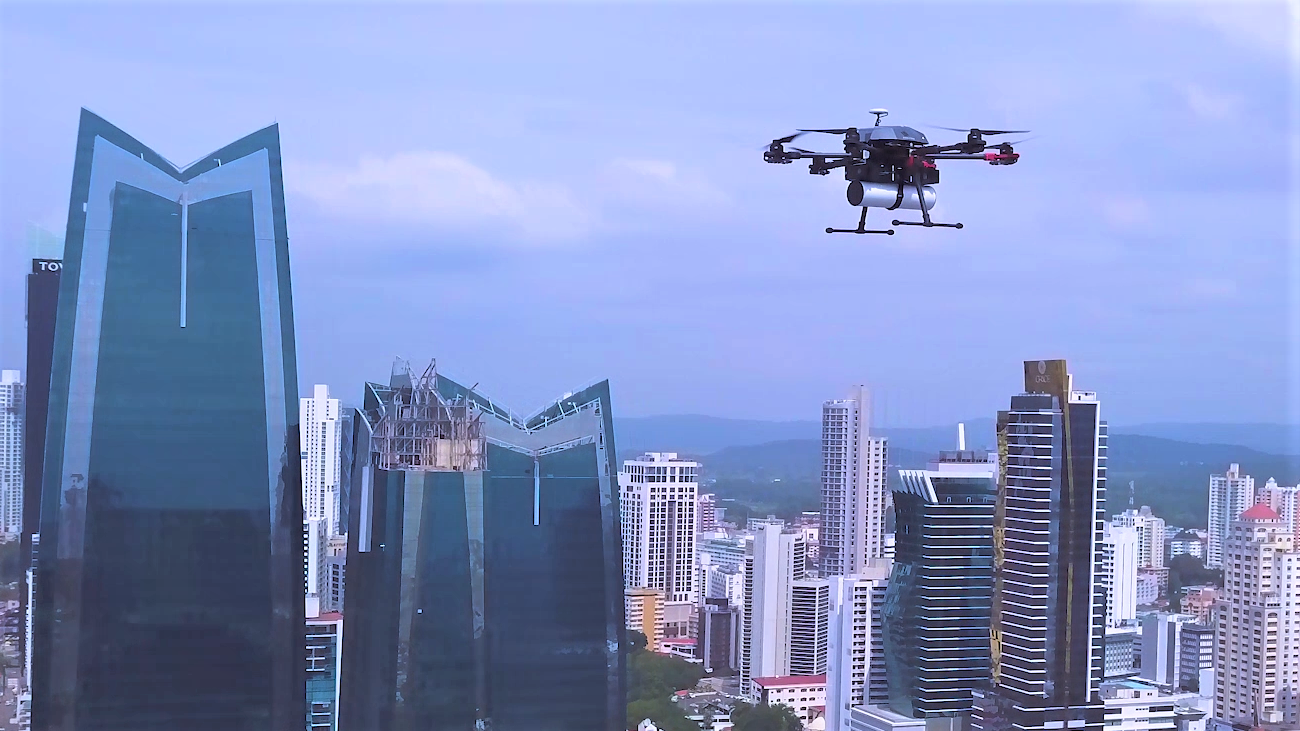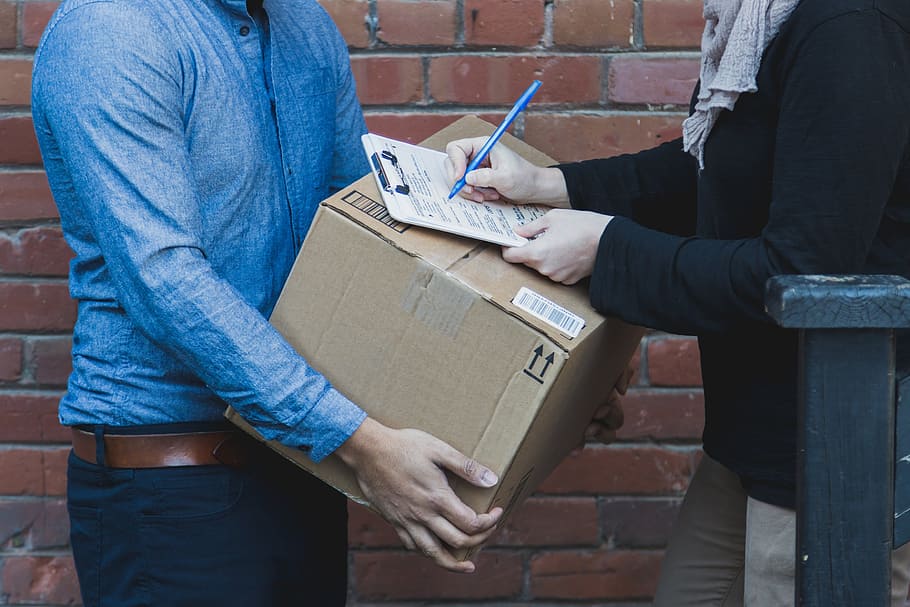by Caleb Davies
Delivering online shopping to people’s homes is a huge source of greenhouse gas emissions, particularly when deliveries fail and the journey needs to be repeated. Researchers are now re-thinking home deliveries to see if there is a better way of doing things, with ideas including robot couriers, jointly owned parcel lockers and an ‘Uber’ for parcels.
The problem begins with people like you. Let’s say you need a new shirt for work. You find one online and order it for delivery the next day. Your shirt will have probably have travelled by ship along with thousands of tonnes of other goods and then been carried by truck with many other articles of clothing to a warehouse. At some point, though, your shirt will have to be packaged up and carried directly to you.
It’s this last section of the logistics, known as the ‘last mile’, that is so troublesome. Here the packages’ routes split like the branches of a tree and make their way to many individual front doors, usually carried by a vast fleet of vans.
Online shopping still accounts for a fraction of all retail spending; below 20% in many developed countries. But it’s rising fast. In 2009, 36% of people in the EU had bought something online in the past 12 months, but by 2019 that had risen to 63%.
And delivery vehicles create a lot of greenhouse gas. Georgia Ayfantopoulou at the Hellenic Institute of transport in Thessaloniki, Greece, says that between 20% and 30% of a city’s carbon dioxide emissions come from last-mile deliveries. ‘It’s a major source of pollution, so in the context of climate change we need to do something about this,’ she said.
Part of the problem is that plenty of deliveries either fail because the customer is not in or get returned, adding extra mileage. A 2018 report from DPD, Europe’s second biggest delivery firm, says that 10% of online shoppers returned their last order.
Some of the proposed solutions sound quite futuristic. Take Flytrex, a company that delivers packages by unconventional means in Reykjavik, Iceland. It flies drones to a person’s home that then lower a package on a wire from 24 metres in the air. Or there’s Eliport, a Spanish start-up that is developing dog-sized autonomous delivery robots that trundle around cities at walking speed delivering packages. These would reduce congestion and emissions, assuming they are powered on electricity generated from renewables. But many solutions like this need further development and face regulatory hurdles.

Bringers
One firm that might make a difference sooner is Nimber. The Norway-based firm’s idea is to connect people who want to send an item to a particular location with people who are already going that way. ‘We are a matching platform that connects senders with what we call bringers,’ said Jon Martin Tafjord, Nimber’s CEO.
‘Sustainability is what we focus on the most,’ said Tafjord. ‘If you look at the cars and trucks that are already on the road, most of them are half empty. That’s why Nimber is not going to have any cars of our own; our mission is to use existing capacity.’
Nimber connects ordinary people with each other and allows them to negotiate a delivery price. Over the past two years, it has organised delivery of about 1,000 parcels a month. But Tafjord says he has plans to scale up hugely and serve businesses, which send a lot more parcels.
It will no longer be possible to negotiate the price of delivering every one. Instead, the plan is to create algorithms that take into account a huge range of factors – where Nimber’s drivers are, where they’re going, how full their vans are, how busy the roads are – then match a sender with a bringer and calculate a price. Think of it like an Uber for parcels. ‘All logistics firms today have fixed prices,’ says Tajford. ‘We want to offer real-time pricing.’
Building those algorithms isn’t easy, which is where the SWIFTLY project comes in. Nimber worked with machine learning specialists to build the algorithms over several years. But the platform is now ready and there was a soft launch in January 2020.
At the moment, Nimber only operates in Norway, but it hopes to expand to other Nordic nations over the next few years. Tafjord also says he’s planning a new research project soon, to see if the Nimber model can work for people carrying packages with them by hand as they travel on the Oslo metro.
‘If you look at the cars and trucks that are already on the road, most of them are half empty.
Jon Martin Tafjord, CEO, Nimber, Norway
But looking at the bigger picture, delivery firms – even good ones – are in some ways part of the problem. Solving the last-mile problem, says Ayfantopoulou, first entails understanding it. And because many private firms are competing to make deliveries, it can be tricky to get them to share data and so understand simple things like the volume of packages going into a city. ‘If firms don’t share data, they can’t collaborate,’ she said.
A project she directed, NOVELOG, set out to change that by showing how city planning could fill knowledge gaps and help develop new solutions. ‘We wanted to find ways firms and the public sector could work together and identify possible business models. Then we would implement this in a pilot.’
Let’s take one pilot study carried out in the city of Mechelen, Belgium. The NOVELOG team first went through a process with the city authorities of identifying the problems and suggesting a solution that would work for them. They were interested in making the city centre a low emission zone and having trucks deliver packages to a set of consolidated lockers rather than to individual houses. Then, bike couriers would take them the last stage to people’s front doors.
Using lockers like this isn’t a new idea, but usually they are controlled by one firm. In this case, the NOVELOG team made the lockers shared between several companies, which took extra work on the tech side.
While the wider aim of the project was to learn how to successfully plan urban logistics in different cities rather than promote specific solutions, in Mechelen, as in the majority of the pilot cities, the measures put in place are still going. That speaks volumes, says Ayfantopoulou. ‘When you accompany a sustainability measure with a sustainable business model, then you create a solid solution,’ she said.
The research in this article was funded by the EU. If you liked this article, please consider sharing it on social media.

